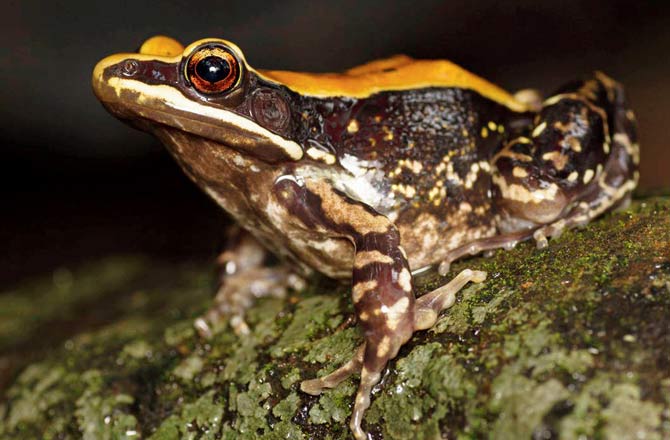The city and its surroundings have a wide variety of frog species that you can head out to spot this weekend

Have you ever heard a frog croak with a tak-tak-tak sound at night? Chances are that it was the common tree frog that you heard. They live on tall trees, which they climb with the help of specialised disc-like digits that they have in their toes that act
One of the films to win a National Award this year is The Secret Life of Frogs, directed by brothers Vijay and Ajay Bedi. And you might not know this, but Mumbai is one of the only cities in the world to have a species of frog named after it.
ADVERTISEMENT

Of all the species found in the Western Ghats, fungoid frogs are the most colourful. They are medium-sized and found mainly in rice paddies. Here, they perform the important function of keeping the population of harmful bugs and insects in check.
That-s because there is a type of the amphibian that was discovered in the region back in the British era. It was first spotted in the Western Ghats, which was part of the Bombay Presidency in those days. The species lives in bushes, and that-s why it was eventually named the Bombay bush frog. In fact, even its scientific nomenclature — raorchestes bombayensis — incorporates the city-s name.

Burrowing frogs are found all over Mumbai. They have an extra thumb-like extension on their hind legs that help them dig up earth. After this action, they sit in the burrowed hole and dig up some more soil with their front legs to cover themselves, which camouflages the species against both, predators and food sources.
But Mumbai has a whole host of other frog species as well. The reason — says wildlife biologist and photographer Sushil Chikane, a local expert who Vijay Bedi directed us to — is that frogs need a lot of moisture to survive, and this region gets high rainfall since the monsoon winds that come in from the west coast get blocked by the Western Ghats.

Bombay bush frogs are half the size of the common tree frog and, as the name suggests, live in small bushes. The species sports multiple colours, for the purpose of camouflaging. It is also one of the loudest varieties around.
"You also find a wide range of species here because the city and its surrounding areas have a diverse range of ecosystems. There are hills, flood plains, mangroves and paddy fields," Chikane adds.

Sushil Chikane
So, with winter almost here, this is the final period of the year when you can head out to spot some of these amphibians. Chikane says that Nagla Block in Sanjay Gandhi National Park and Yeoor are two options within the city. But you can also head to Matheran to spot a few species that you wouldn-t find here because they can-t stand pollution. Either way, the choice is yours and grab it — or should we say gribbit — while you can.
Where to head
Within Mumbai: Nagla Block is one of the most ideal places in the city.
At Sanjay Gandhi National Park, NH 48, Sasunavghar.
Outside Mumbai: Drive down to the Phansad or Bhimashankar wildlife sanctuaries.
At Ganpati Ghat Walkway, Tungi, near Pune for Bhimashankar; Murud, Raigad, Roha for Phansad
Catch up on all the latest Mumbai news, crime news, current affairs, and also a complete guide on Mumbai from food to things to do and events across the city here. Also download the new mid-day Android and iOS apps to get latest updates
 Subscribe today by clicking the link and stay updated with the latest news!" Click here!
Subscribe today by clicking the link and stay updated with the latest news!" Click here!







